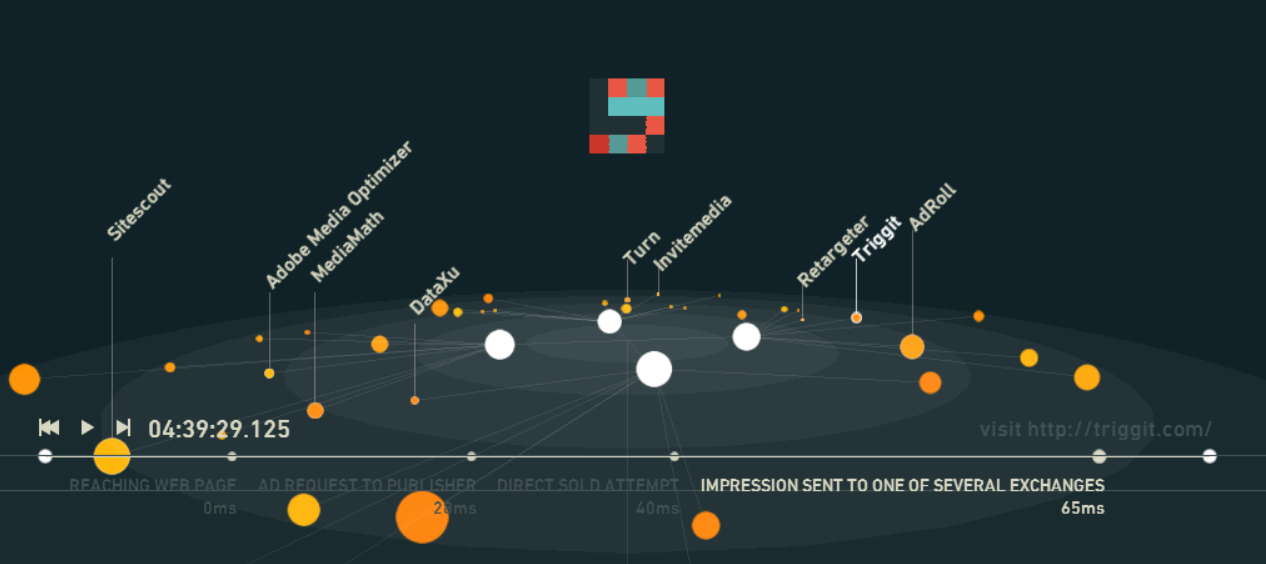TRACKING THE TRACKERS
When you browse online advertisments are shown to you through ad servers. Whether you visit a newssite, shop online or watch a video on YouTube, these activities are being tracked by ad-servers and they create a profile of you. These profiles serve the ad-servers to you with more relevant advertising. More relevant means also more clicks for the ad serving party, that’s is where they make their profit, and if everything is done well, also better sales for the advertiser.
For more on how online advertising market place works, have a look at this ad-tech visualisation by the Office for Creative Research.

How that is being done exactly is a black box for most of the people. Is it whether you clicked a certain news article on a specific site or did you visit the same sites as most people in a certain segment are doing? Do the ad-servers know more then you know? The case of predictive analytics used by Target on pregnancy is well known: How Target figured out a teen girl was pregnant before her father did.
How that is being done exactly is a black box for most of the people. Is it whether you clicked a certain news article on a specific site or did you visit the same sites as most people in a certain segment are doing? Do the ad-servers know more then you know? The case of predictive analytics used by Target on pregnancy is well known: How Target figured out a teen girl was pregnant before her father did.
Floodwatch: A Collective Ad Monitoring Tool for Social Good from Ben Rubin on Vimeo.
To find out more of the ideas behind the “black box” Floodwatch has been developed. The idea is to anonymously share your data to help researchers decipher the algorithms behind the advertising black box.
Floodwatch, a Chrome extension by the Office for Creative Research and Ashkhan Soltani, lets you turn it around ever so slightly so that you can track what the advertisers serve you. It let you compare the advertisments being shown to you to a benchmark. Are you being shown more yellow advertisment or more red, that does tell something. Or are they aware of certain of so-called “life events” of you like moving to a new house or going to university?
You can find out ourself analysing your own data with with advanced data visualisations they also provide.
And who knows, maybe this will become the new Freud in the digital age. Learning to know yourself by analysing the ads you are being served.
For more back ground on the tool, please read the article by Jer Thorp, you can read his article here: You are not your browser history, What $50 taught me about my web ad identity– and how I’m fighting back.